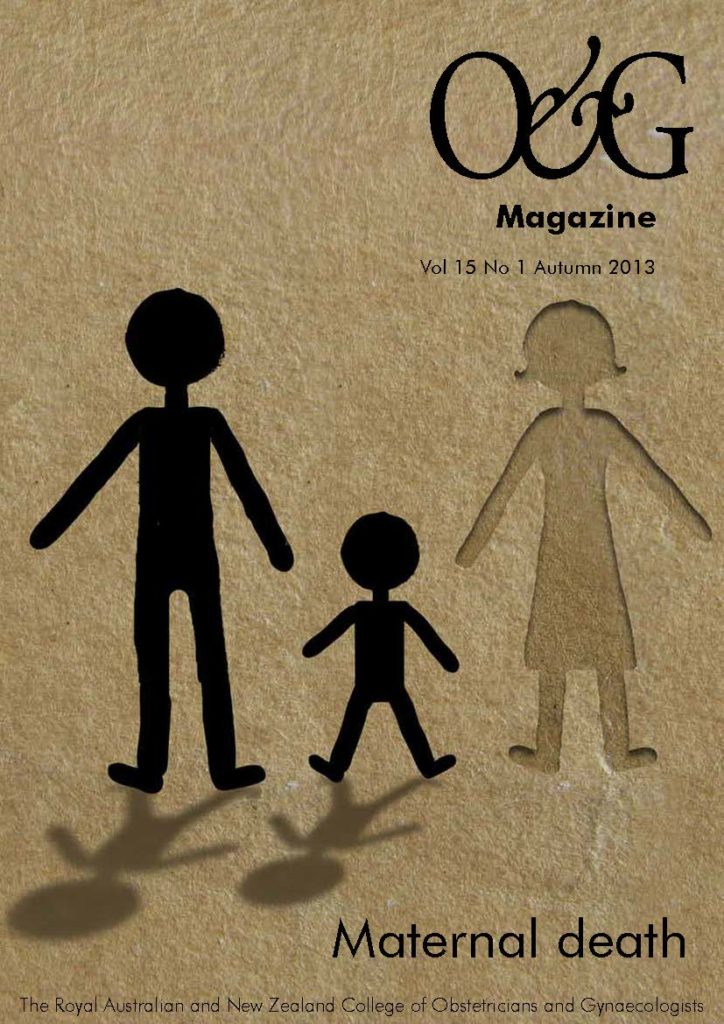The complications of induced abortion continue to be a cause of maternal death, albeit an uncommon one, even in developed countries in the 21st century. In the developing world, induced abortion – often unsafe illegal abortion – is still a major contributor to maternal mortality rates, although there has been some improvement in death rates over the past two decades.
The Eighth Report of the Confidential Enquiries into Maternal Deaths (CEMD) the UK, published in 2012, contains details of two maternal deaths following termination of pregnancy (TOP) in the period 2006–08.1 A total of 2 291 493 births (live and stillbirths after 24 weeks gestation) were recorded in the UK in this time, giving a maternal mortality rate for induced abortion of less than one death per one million maternities.
Significantly, these deaths are included in the chapter dealing with genital tract sepsis, from which the key message is: ‘Be aware of sepsis – beware of sepsis’. The first death was related to staphylococcal toxic shock syndrome following surgical TOP, the second to sepsis from Clostridium septicum after a medical TOP. Prophylactic antibiotics were not prescribed in either case. Of course, clostridial infection is a rare, but recognised, cause of maternal death following vaginal and caesarean births as well as miscarriage and is probably related to the vaginal carriage of the organism, which ascends into the uterus and the exposed placental site.
Figures of one or less than one death per 100 000 abortions are widely quoted for early procedures, surgical and medical, in developed countries.2 In New Zealand, in 1980–2005, there were almost 250 000 TOPs, the vast majority of which were surgical, and no recorded mortality.3 Figures for surgical abortion in Australia, although not formally available for recent years, are likely to be similar. Goldstone and colleagues in 2012, reporting on more than 13 000 early medical abortions performed in the Marie Stopes group of clinics from 2009–11, using mifepristone/misoprostol, recorded one maternal death.4 Few details of the circumstances of this death are available, but it appears that the woman concerned developed an infection with Group A streptococcus several days after medical TOP; other family members also had upper respiratory Group A strep infections. The woman declined to seek treatment initially, which undoubtedly contributed to her death nine days following the abortion process. Prophylactic antibiotics were not administered. This is the only death known to have occurred in what must now be more than 50 000 medical abortions performed using mifepristone/misoprostol in Australia.
The recommendation of the Royal College of Obstetricians and Gynaecologists (RCOG) is that abortion services ‘should offer antibiotic prophylaxis effective against Chlamydia trachomatis and anaerobes for both surgical abortion (evidence grade A) and medical abortion (evidence grade C).’5 The reason for the lower level of evidence for medical termination is simply that the randomised controlled trials have not yet been done. Given that there is clear evidence for the use of prophylactic antibiotics after surgical TOP, when in most cases the woman is going home with the uterus completely emptied of products of conception that might provide a nidus for infection, it seems logical to give the same antibiotics to a woman who is undergoing the expulsion of products of conception either in a clinic or at home, particularly when this process may occur over a period of days. The RCOG guidelines recommend metronidazole one gram rectally at the time of the abortion plus, commencing on the day of the abortion, either doxycycline 100mg twice daily for seven days or azithromycin one gram orally. The alternative to such prophylaxis, screening women for pathogens and treating those with demonstrable infection, can be difficult to carry out meticulously in the context of abortion provision.
It is important also that women undergoing induced abortion are aware of the need of reporting immediately for medical assessment if they develop fever, pain or other symptoms of infection. In this regard, practitioners providing abortion should ensure that women who have travelled away from home to access abortion will feel comfortable accessing post-abortion care locally if they need it once they have returned home.
Haemorrhage was not a cause of death associated with abortion in the UK Report. Where surgical abortion is performed in suitable clinical surroundings by experienced practitioners who can proceed to laparoscopy/laparotomy if needed, the risk of such deaths is likely to remain very small, as shown by the New Zealand figures. However, the Report does caution about the risk of abnormal placentation at the site of previous caesarean section scars, which can lead to catastrophic haemorrhage even in the first trimester, and certainly in the second and third, no matter by which route the pregnancy ends.1 In this respect, it would be prudent for practitioners contemplating offering home medical TOP to a woman with a history of several caesarean births to consider whether such a woman may be better managed with medical TOP within a clinic or with surgical TOP.
There has been a welcome decrease in death rates from abortion in developing countries over the past 20 years.6 Increasing contraceptive use and the availability of more effective forms of contraception have cut the number of maternal deaths in such countries by 40 per cent in this time, simply by reducing the number of unplanned and unwanted pregnancies.2,6 In addition, since misoprostol has become widely, if illegally, available in Africa, Asia and South America, induced abortion using this drug has to a large extent taken the place of unsafe abortion in which untrained practitioners used unsterile instruments to perforate the membranes and/or extract products of conception.7,8 While misoprostol and other drugs recognised as suitable for medical abortion should ideally be used, at appropriate gestations, under the supervision of a health professional and with access to emergency care if needed; self-administered misoprostol, especially in early pregnancy, is relatively safe, and much less likely to lead to major haemorrhage, organ damage or infection than the sticks or other sharp objects often used previously in places where legal safe abortion is unavailable.
However, each year, according to the WHO, nearly 42 million women faced with an unplanned pregnancy have an abortion, and about 20 million of them do so unsafely, either inducing abortion themselves or obtaining abortion clandestinely. It is among the latter group that most of the deaths occur that constitute the 13 per cent of worldwide maternal mortality attributable to abortion. More effective sex education, more accessible effective contraception, better access for all women to safe abortion when needed, must all play a part if we are to reduce these figures.9
References
- Centre for Maternal and Child Enquiries. Saving mothers’ lives. Eighth Report of the Confidential Enquiries into Maternal Deaths in the United Kingdom. BJOG, 2011; 118, supplement.
- Hogan M et al. Maternal mortality for 181 countries, 1980-2008: a systematic analysis of progress towards Millenium Development Goal 5. Lancet 2010; 375 (9726): 1609-23.
- Sparrow MJ. A woman’s choice. ANZJOG 2004; 44 (2): 88-92.
- Goldstone P, Michelson J, Williamson E. Early medical abortion using low-dose mifepristone followed by buccal misoprostol: a large Australian observational study. Med J Aust 2012; 197 (5): 282-6.
- The care of women requesting induced abortion. Evidence-based Clinical guideline No 7. London: RCOG, 2004. (www.rcog.org.uk/womens-health/clinical-guidance/care-women-requesting-induced-abortion accessed 25/1/2013)
- Cleland J et al. Contraception and health. Lancet 2012; 380 (9837): 149-56.
- Diniz D, Madeiro A. Cytotec and abortion: the police, the vendors and women. Cien Saude Colet 2012; 17 (7): 1795-894.
- Singh S. Hospital admissions resulting from unsafe abortion; estimates from 13 developing countries. Lancet 2006; 368:1887-92.
- Grimes D et al. Unsafe abortion – the preventable pandemic. Lancet 2006; 368: 1908-19.






Leave a Reply